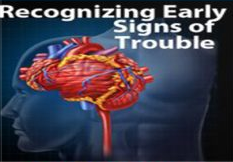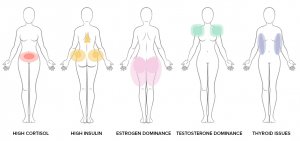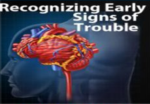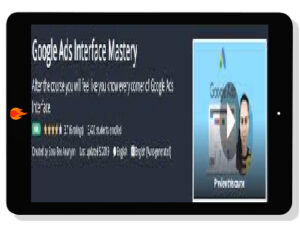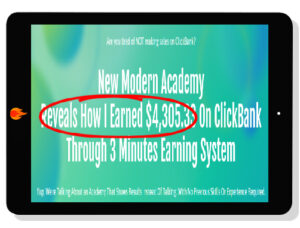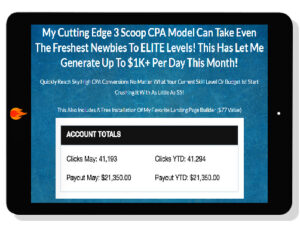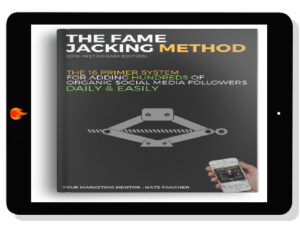Available for Pre-Order. This product will be available within a few days.
Sean G. Smith & Tom F. Gutchewsky – Recognizing Early Signs of Trouble
Heart Disease and Stroke are the two leading causes of death in the world…
You NEED to understand cardiac and neurologic anatomy and physiology… yet the complexities of these body systems can overwhelm even the most seasoned nurses. The key to avoiding life–threatening complications is to identify subtle changes in your patient’s symptoms early.
Now in this comprehensive online course, two hand–picked experts with 40+ years of combined experience give you the tools you need to identify presenting and evolving symptoms, so you can confidently intervene before a situation becomes life–threatening.
Walk away with clinical pearls like:
Most recent pharmacological treatments available for cardiac and neuro emergencies
Key insights to anticipate when an invasive procedure like angioplasty, stenting or surgery is likely
How patients with asymptomatic VPBs in the peri–infarct period, when given antiarrhythmic drugs, can have an increased risk for mortality
Which therapeutic treatment will yield the best results based on current ICP
The latest evidence–based strategies for neuro trauma
And so much more!
Acute Cardiac Conditions: Quick Assessment & Rapid Action
Module 1: Acute Cardiac Pathology
Review angiogram films to identify specific pathology including culprit vs. chronic lesions
Identify changes of acute MV regurgitation caused by myocardial ischemia on echocardiogram
Observe how an intra-aortic balloon pump can stabilize a patient with ventral septal defect caused by MI prior to surgery
Discuss which drugs are most beneficial for specific conditions and adhere to AHA recommendations
Module 2: Aortic Dissection
Stanford types A and B – including common causes, which patients are at risk, and typical presenting symptoms
Review diagnostic techniques and images including echocardiogram, TEE, and CT scans for pathological findings
Which patients require emergency surgery vs. medical management?
Explore the latest surgical techniques used in treatment
Module 3: Cardiac Tamponade
Identify the symptoms of cardiac tamponade including the components of Beck’s triad
Learn the causes of pericardial tamponade
Review diagnostic echocardiogram and CT images
Appropriate treatments including pericardiocentesis and pericardial window surgical procedures
Module 4: Cardiogenic Shock
Understand the multiple causes of cardiogenic shock to identify early symptoms
Compare the function of diagnostic techniques, including echocardiogram and swan ganz catheters
Gain insight into typical and more advanced treatments including fluid resuscitation, medication, interventions, intra-aortic balloon pumps, ECMO, and VADs
Module 5: Cardiac Arrhythmias
Identify acute cardiac arrhythmias including atrial fibrillation/flutter, 3rd-degree heart block and ventricular tachycardia by EKG findings
Review common etiologies and risk factors
Explore treatment options including medication, electricity, and ablation procedures
The Complex Neuro Patient: Strategies to Take Your Practice to the Next Level
Module 1: Neuroanatomy
Summarize neuroanatomy as applicable to complex neurological patients
Overview of the nervous system: Central Nervous System, Peripheral Nervous System, and Autonomic Nervous System
Identify function, formation, properties, and flow of cerebral spinal fluid
Module 2: Neurological Assessment
Review neurologic assessment strategies and changes associated with pathological conditions
What you need to do with your assessment results
Module 3: Overview of Seizures
Specify the clinical presentation and treatment recommendations for seizure types and epilepsy
Go over what your responsibilities are before, during, and after your patient has a seizure
How to, and what to be cautious about with post traumatic seizure medications
Module 4: Brain Injuries, Spinal Cord Injuries, and Lesions
Recognizing the signs and symptoms of a brain injury
Identify essential management strategies for patients with spinal cord injury and head injuries
Discuss secondary injuries of spinal cord and brain trauma
Module 5: Critical Care Management of the Neuroscience Patient
Correlate increased intracranial pressures with expected causes and critical care management
Overview of causes, symptoms, and management of Diabetes Insipidus
Module 6: Migraines and Headaches
Identify essential management strategies for patients with complicated headache & migraines
Review the diagnostic criteria and management strategies for patients with Alzheimer’s Disease, Multiple Sclerosis, Parkinson’s Disease, Guillain-Barre Syndrome, Myasthenia Gravis, and Amyotrophic Lateral Sclerosis
Would you like to receive Sean G. Smith & Tom F. Gutchewsky – Recognizing Early Signs of Trouble ?
Must Know Cardiac and Respiratory Lab Tests (Digital Seminar)
CKMB? BNP? Troponins? Learn what they all mean and understand why we order them and how they integrate into a comprehensive cardiac assessment. Understand the wherefores and whys of cardiac workup…Time is Muscle! Examine oxygenation, ventilation, acid-base status and more. No matter the setting you work in you will benefit from gaining understanding through application to case studies. Both Inpatient and Outpatient applications will be addressed along with patient monitoring, and practice guidelines for optimizing therapy.
Laboratory Tests Made Easy: A Plain English Approach, Second Edition (PDF Book Download)
This best-selling reference book provides both the “need to know” information, as well as the more in-depth “nice to know” details relevant to your patient’s lab results. In this Second Edition you will find plain English summaries, pertinent case studies, and easy to read diagrams and tables. This fully revised and updated book puts the information right at the fingertips of any medical professional at any experience level. Laboratory Tests Made Easy is a must for your professional library.
Med-Surg Pocket Guide (PDF Book Download)
Full-color pocket guide for focused assessments, treatments, interventions and preventions – right at your fingertips.
Loaded with references and tools to build critical thinking, covering cardiovascular, IV therapy, pulmonary, multisystem and shock, neurological, and critical skills. An easy to use resource for you to deliver high-quality care.
Learn more about the speaker:
Tom F. Gutchewsky, ACNP, RN, CCRN, is certified as an Acute Care Nurse Practitioner and currently practices as an Advanced Practice Nurse in Cardiac Surgery working outside of Chicago with a cardiac surgery group that performs over 2000 procedures annually, including left ventricular assist devices and heart transplantation. He has over 20 years of bedside experience, having worked in the Cardiac ICU, the Surgical ICU, and as the APN for Cardiac Surgery. Tom has been a nurse practitioner for over 18 years, primarily with open heart surgery, also assisting in the operating room and has worked with Cardiology, EP, and interventional radiology. He precepts nurse practitioner students in the open heart ICU and has previously taught undergraduate nursing students.
Learn more about the speaker:
Sean G. Smith, RN, BSN, NREMT -P, C-NPT, CCRN, CMC, CEN, CFRN, FP-C, CPEN, has experience in both emergency care and critical care. He has written neo-natal/pediatric pharmacology CE exams for the American Association of Critical Care Nurses, as well as writing for Mosby clinical updates. He has practiced and taught critical/emergency care and pre-hospital emergency medical services for over 20 years. Career highlights include research in molecular endocrinology, serving in the US Navy, a wide variety of ICUs, flight nursing, and medical missions, as well as offering medical support to NASA . Sean lectures at the national level and has extensive text review/exam writing/contributing author credits. He holds multiple advanced specialty certifications in critical care, emergency, and flight nursing, as well as cardiac medicine, and neonatal/pediatric critical care transport.
Learning that Fits YOUR Schedule:
Watch your email for an order confirmation with the account access link to get started on materials instantly. View any of the video modules online at your convenience. You will have unlimited access to the videos online, plus you can download everything for future reference! Plus, use the CE21 Mobile™ app to access the course content on-the-go, wherever and whenever you want on your mobile devices.

